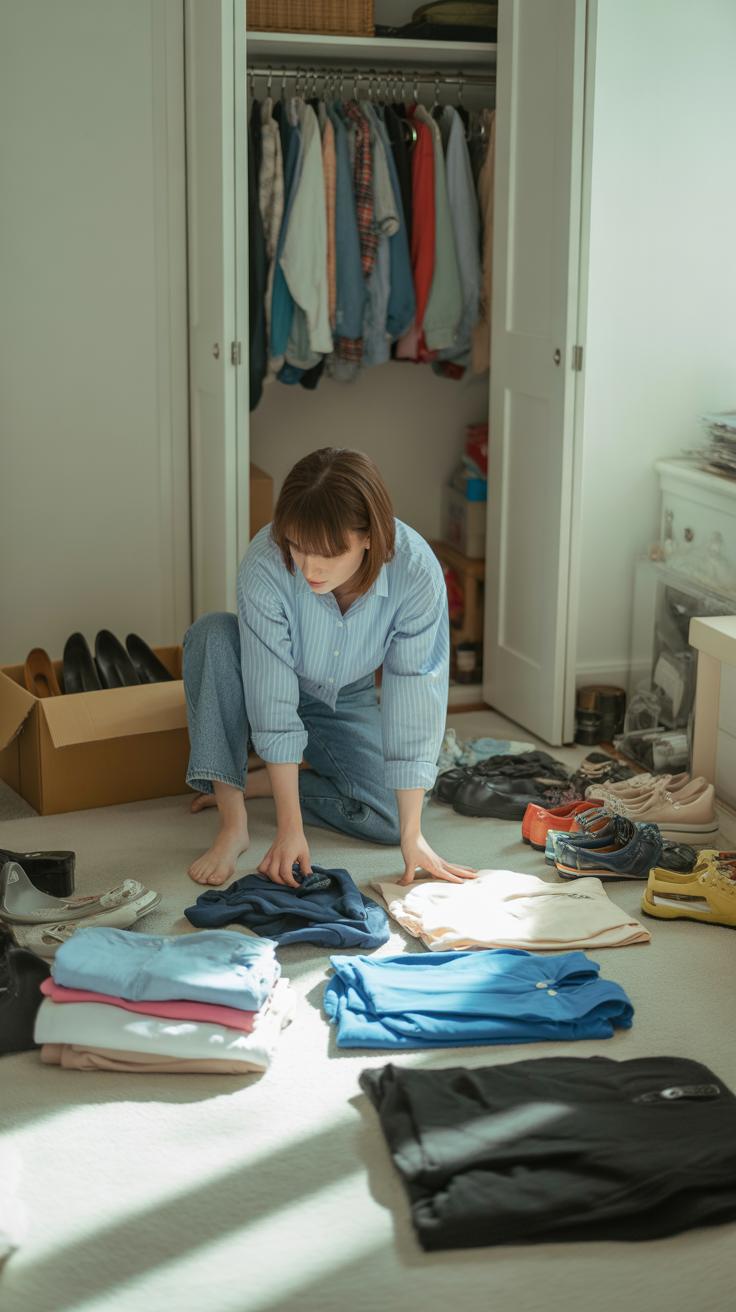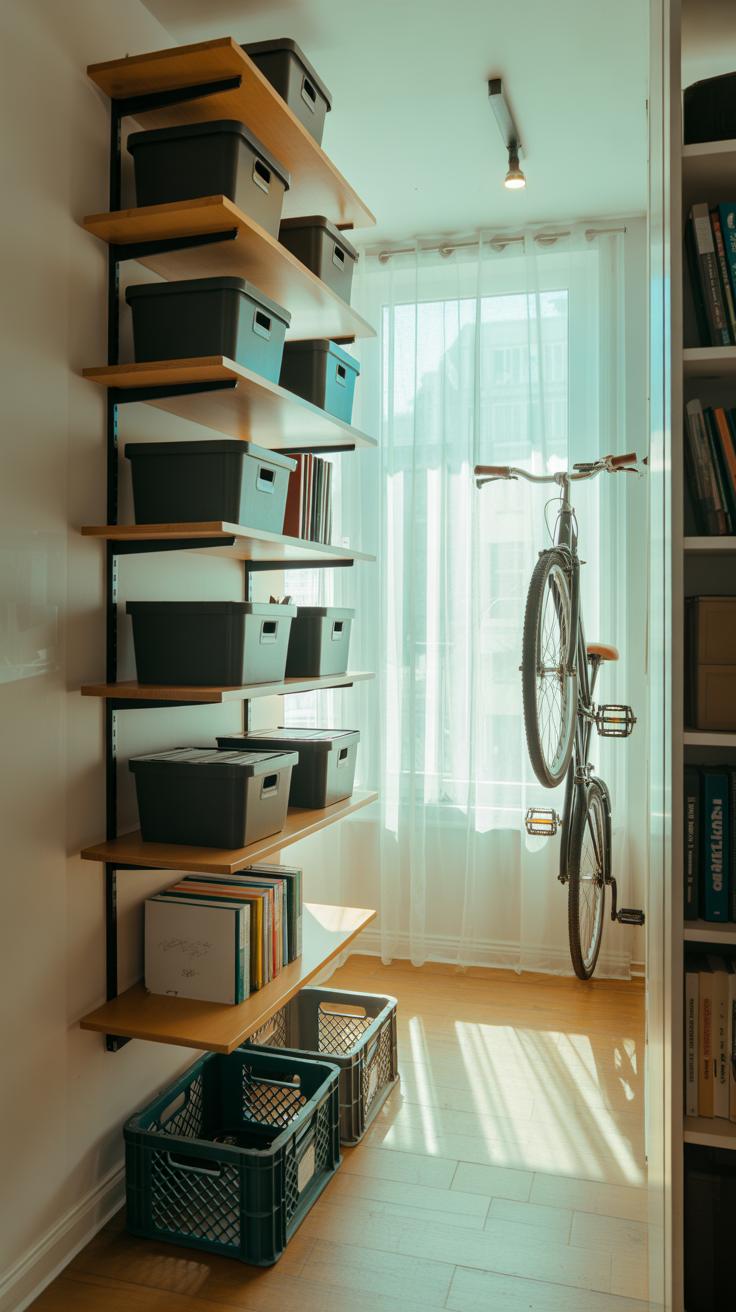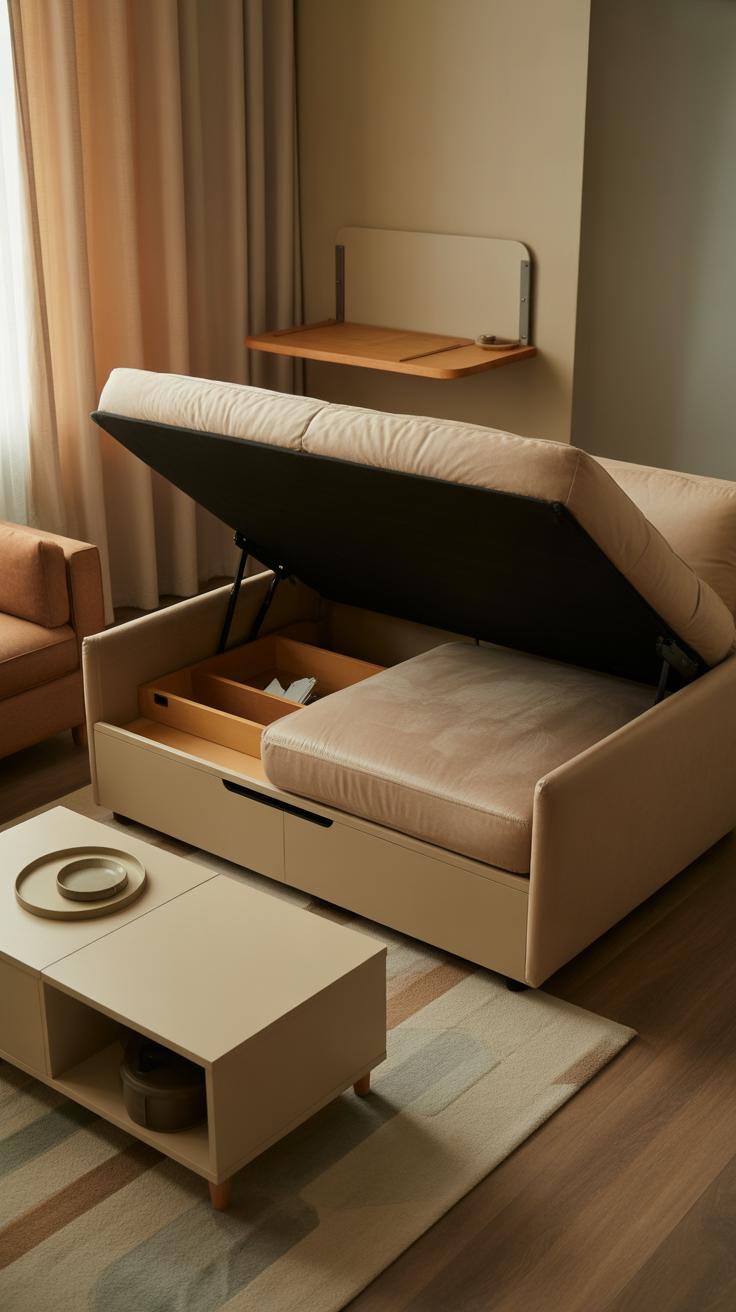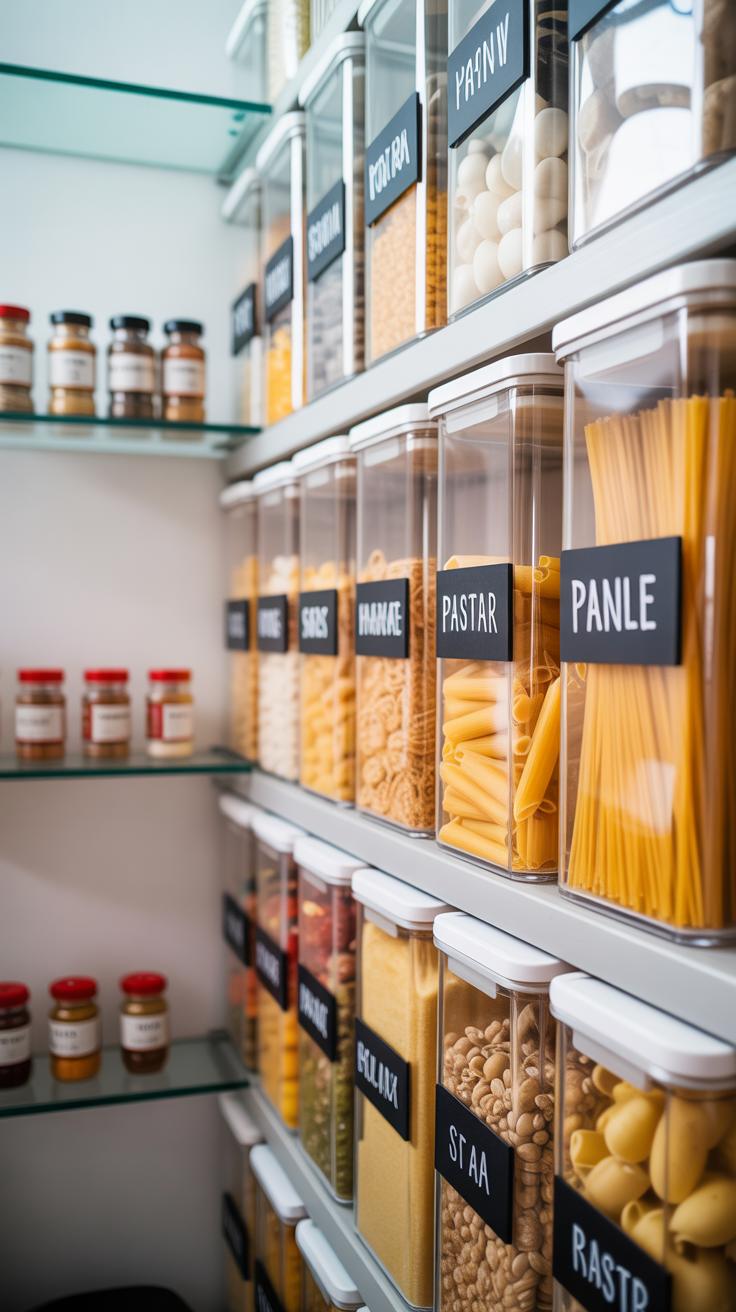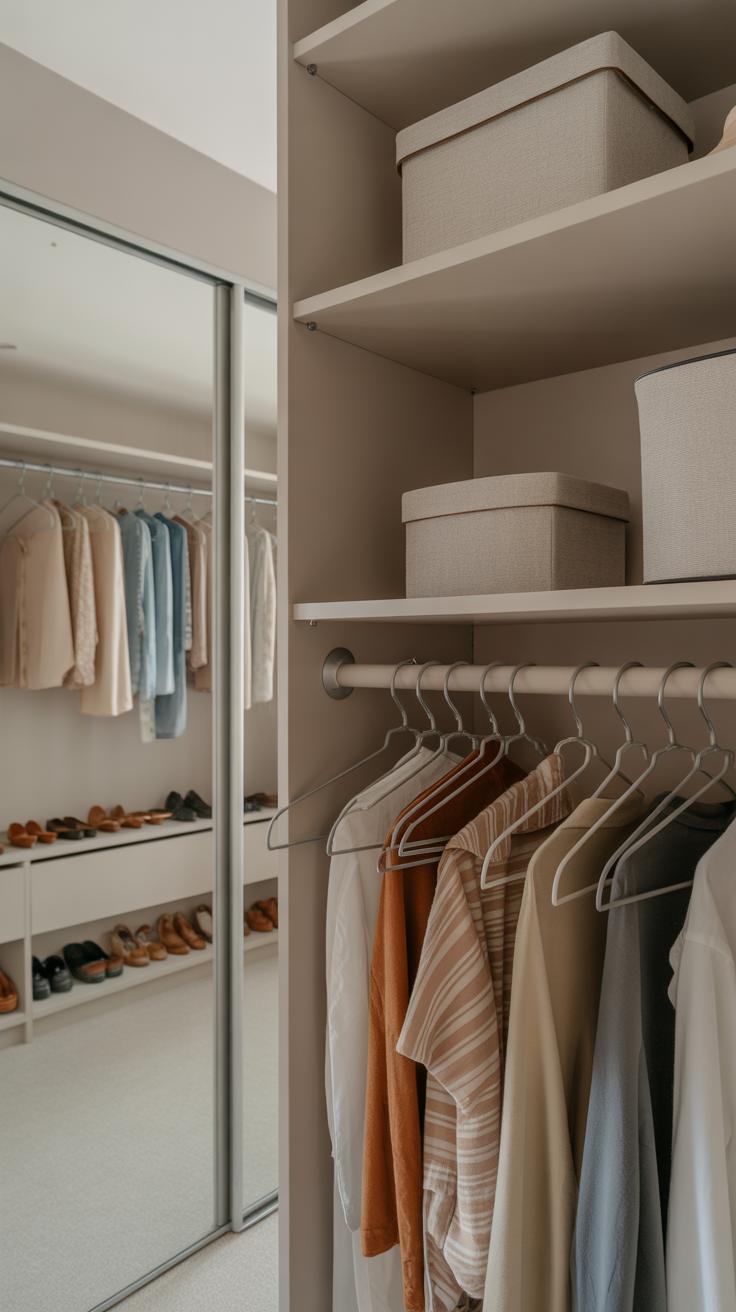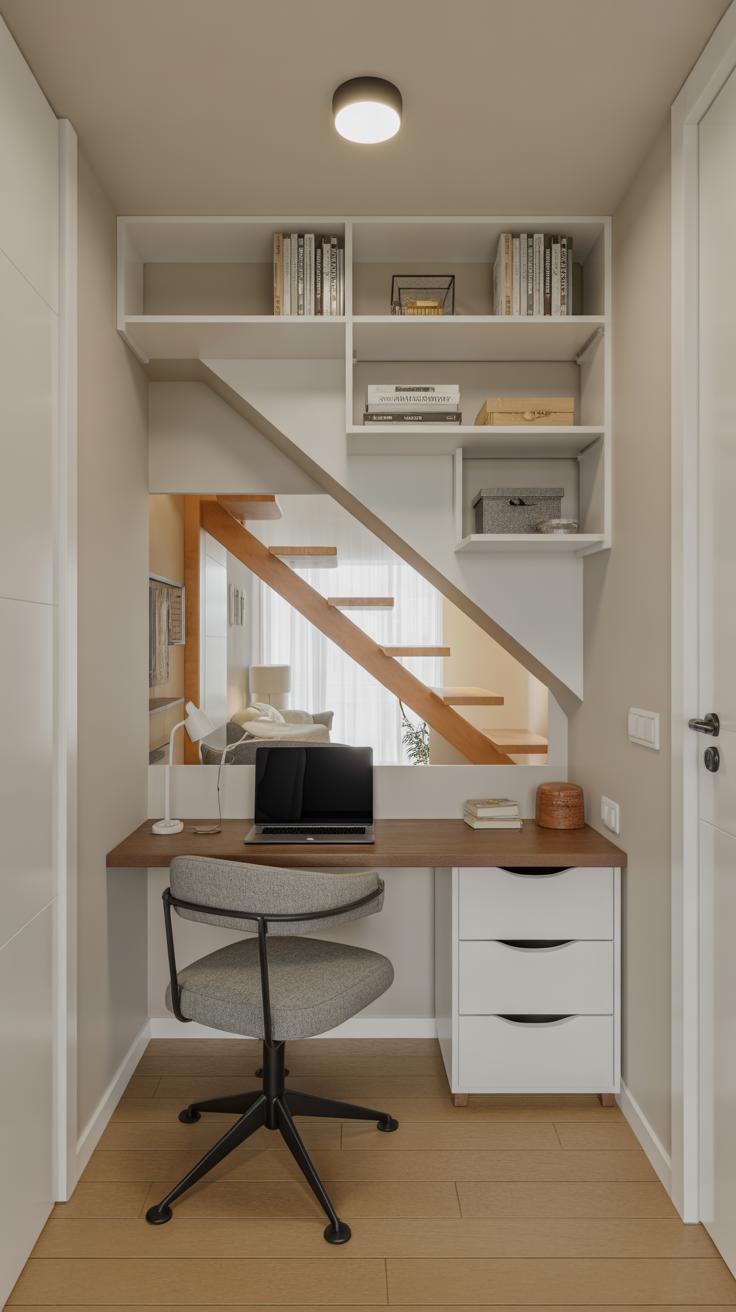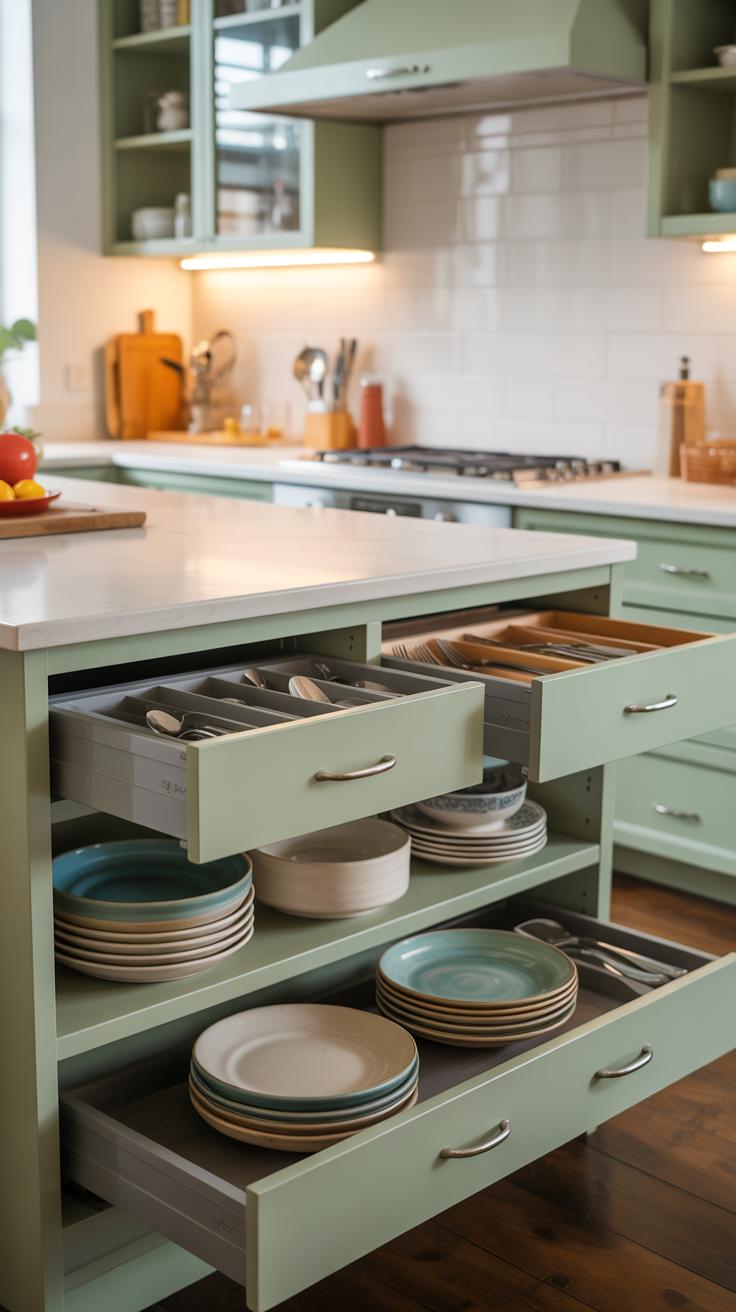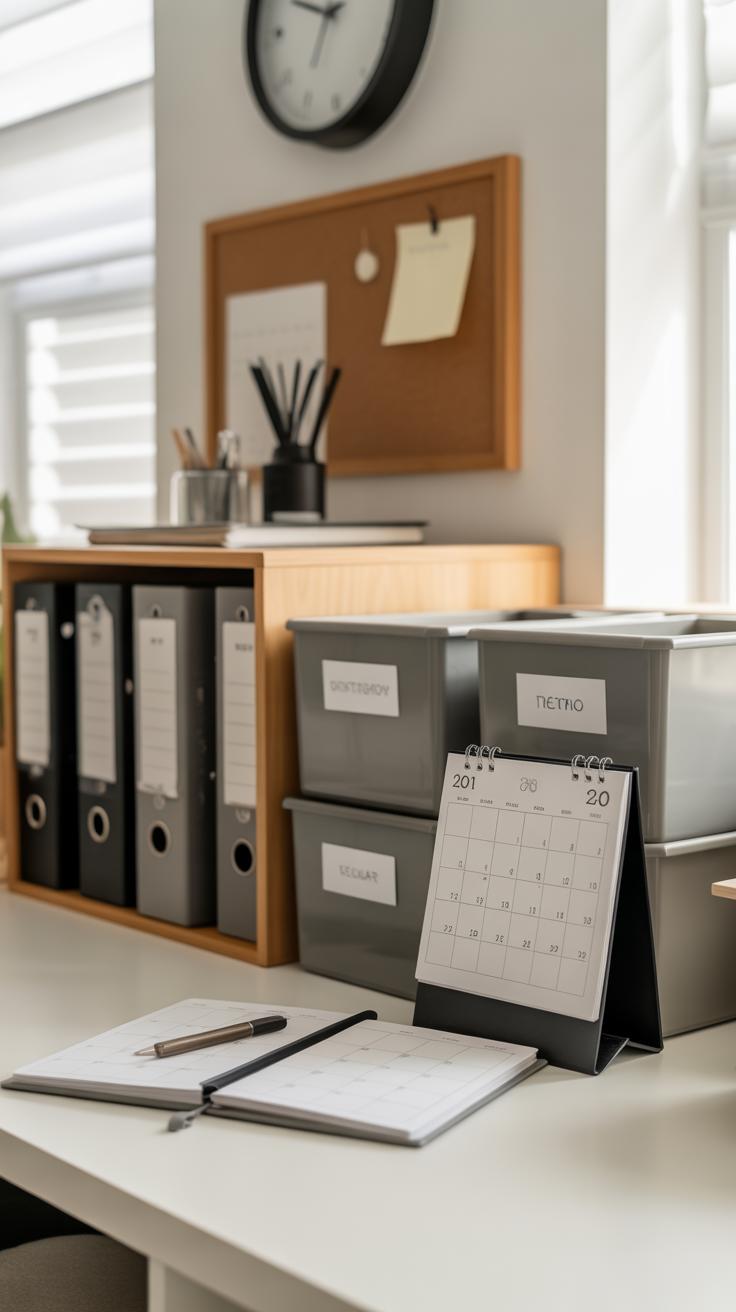Introduction
Finding space to store your things can often feel like a challenge. Yet, clever storage hacks can transform any room without needing a lot of time or effort. With a few easy steps, you can bring order to clutter and make your space work better for you.
This article will guide you through simple, practical hacks you can try right now. Each tip is designed to help you use every available spot, cut down on mess, and keep your home tidy and welcoming. Let’s explore how a small change can make a big difference in organizing your rooms.
Start With Sorting And Decluttering
Before you even think about containers or clever storage solutions, you need to sort through what you have. It’s easy to underestimate how much stuff accumulates until you actually see it all spread out. Sorting helps you get a clear picture — and it often surprises people, myself included. You realize some things you haven’t touched in months or years, or even duplicates you forgot about. This step clears mental and physical space, making it easier to organize what’s truly necessary.
When you remove items you no longer need, you also create breathing room. That freedom to maneuver means storage hacks will actually work. Cramping too much into a small space creates chaos instead of order. So, sorting is really about understanding what belongs and what just weighs you down.
Why Less Is More
Reducing clutter does more than free up shelf space. It simplifies your daily routine. For example, having fewer clothes means picking outfits takes seconds, not frustrating minutes. Storing fewer kitchen gadgets means drawers close without struggle. It’s easier to maintain order when there’s less to manage, and less distraction when searching for something.
Still, it’s not always obvious what counts as “necessary.” I’ve found that when I whittle down to essentials, organizing feels less overwhelming. Imagine a bookshelf with just your current reads versus one crammed with old, forgotten books. The less stuff you keep, the more flexible and inviting your space becomes.
Easy Steps To Let Go
Deciding what to keep may feel daunting. Try asking yourself a few quick questions for each item:
- Have I used this in the last year?
- Does this bring me joy or serve a purpose?
- Would I buy this again today?
If the answer is no to most, it’s probably time to move on. One simple method is the “Three Pile” approach: Keep, Donate, Trash. It sounds basic, but breaking decisions into small steps reduces hesitation. If you’re on the fence, set the item aside and revisit later. The key is not to stall — sorting thrives on momentum, and any progress feels good, even if imperfect.
Use Vertical Spaces Wisely
When it comes to grabbing more storage, walls often go overlooked. Yet, these vertical spaces can hold a surprising amount of items if you give them a chance. Shelves and hooks are simple ways to free up countertops and floors, leaving you with neat, accessible spots for everything. For instance, in your kitchen, shelves above the sink or stove can hold spices, cookbooks, or mugs within easy reach. In bedrooms, hooks behind the door or near the closet are perfect for bags, scarves, or hats—things that tend to clutter drawers or chairs.
Wall-mounted storage comes in many forms. Floating shelves offer a clean look and work well for books or small containers. Pegboards can be customized endlessly—great for craft rooms or garages where tools or supplies need quick access. Hooks are versatile too: metal ones for coats in the entryway or small adhesive versions in bathrooms to hang towels or jewelry. The trick is to place them where you naturally reach for those items but wouldn’t want to sacrifice floor space.
Hanging organizers go beyond the usual shelves and hooks. Baskets suspended on walls can hold mail, keys, or produce in the kitchen, keeping counters clear. Over-the-door racks create hidden storage in tight spots, ideal for shoes, cleaning supplies, or even pantry items. Pegboards with hooks let you switch things around on a whim, which is handy if your needs shift over time. These solutions keep things visible and within reach without crowding your room—the kind of straightforward fix I think most people don’t consider until that clutter is right in their face.
Make Furniture Work Double Duty
Hidden Storage In Your Furniture
Furniture with built-in storage can feel like a secret weapon when space is tight. Take beds with drawers underneath—they’re perfect for stashing away extra blankets, shoes, or out-of-season clothes without adding clutter. I’m always surprised how much those drawers hold, though sometimes I forget what’s in there until I dig around a bit.
Ottomans and storage benches also offer hidden compartments. These pieces often sit at the foot of a bed or under a window, giving you a spot to sit and a place to hide away things you don’t need every day. When picking one, think about how much stuff you actually need to hide versus how much floor space you want it to take up. Sometimes, a bulky ottoman doesn’t quite fit as well as you imagine.
Choosing Multi-Purpose Items
Multi-purpose furniture can quickly change how a room feels and functions. A coffee table that doubles as a storage box? Yes, please. A desk that folds into a bookshelf? That’s clever. Your aim is to find pieces that don’t just fill space, but work harder. But be cautious—sometimes, trying to do too much with one item leads to compromises like awkward shapes or less comfort.
Ask yourself: where else could that furniture fit? For instance, a storage bench might serve in the entryway for shoes and bags, but could it work at the foot of a bed too? Picking pieces that blend functions means fewer things crowding your space and more order. It’s not a magic fix, but often it makes daily tidying less of a hassle.
Use Clear Containers And Labels
There’s something about clear containers that just makes life easier when you’re trying to keep a room tidy. When you can see right through a box, you don’t waste time searching or guessing what’s inside. It’s like having a little window into your stuff. I’ve found that using clear bins in places like closets, under the bed, or even in the pantry really speeds things up. You know exactly where that winter scarf or last year’s holiday decorations are without digging around.
Clear containers come in all shapes and sizes—stackable drawers, plastic tubs with lids, small boxes for craft supplies, or even jars for the kitchen. Choosing the right type depends on what you’re storing. Deep bins work well for bulkier items while shallow, wide containers suit smaller things like office supplies or children’s toys.
Labels are what pull it all together. They might seem obvious, but their impact is bigger than you’d think. When labels are clear and easy to read, anyone can find what they need—kids, guests, or you when you’re in a rush. I like simple labeling methods: handwritten tags, printed labels with a word processor, or even chalkboard stickers you can rewrite. Sometimes, a little picture or icon helps, especially for things like toy storage or craft kits. It’s surprising how just a few minutes spent labeling keeps things neat long term.
Some people prefer overdoing labels, but I think there’s a balance. Too many tiny labels can get confusing or even ignored. Just focus on the main categories and keep it simple. If you want, leave a blank label spot for new stuff—you never know when you’ll need to adjust your system. That flexibility saves you from redoing everything every time you tidy up.
Maximize Closet Space With Organizers
Closet organizers can change the way you use your space, sometimes in small but meaningful ways. Hanging shelves create extra spots to stack sweaters or bags without taking up floor room. I once added a set of fabric hanging cubbies and suddenly, scarves and hats found a neat home — no more piles or lost items.
Shoe racks come in all shapes, from tiered metal frames to over-the-door holders. Picking one depends on your closet size and shoe collection, but these racks lift shoes off the floor and stop them from cluttering the bottom. Some racks even tilt or fold, letting you adapt to changing storage needs.
Dividers within drawers or on shelves help keep everything separated. Sometimes just one extra divider turns a messy pile of socks or belts into an orderly stack. It’s about squeezing every inch so nothing stays forgotten. You might be surprised how much this simple step impacts your daily routine.
Creating Sections In Your Closet
Dividing your closet by item type or season is more than just neatness; it can save time. Maybe keep work clothes in one area, casual wear in another. Seasonal separation is handy, too—store winter coats in higher or less reachable spots when it’s summer, then switch them back when the cold returns.
Labels or color-coded hangers can help tell sections apart, but you can also rely on visual cues like texture or fabric weight. The trick is to find a balance between perfectly sorted and realistically used. Not every item needs its own category, but grouping clothes this way prevents you from digging through everything when looking for one thing.
Using Shoe And Accessory Racks
Shoe racks come in a surprising variety, and the best fit depends on your space. Vertical racks clamp shoes along a wall, keeping floors clear. Over-the-door organizers stash footwear out of sight but within reach. Stackable bins work well if you want to separate casual shoes from dressier pairs.
Accessory holders aren’t just trays. Think hooks for belts, small hanging organizers for jewelry, or slim racks for ties and scarves. Some people use pegboards inside doors or walls — which, I have to say, feels a bit like treating your closet like a workshop, but it really opens up space.
Floor space is precious, and these racks keep things up and tidy. Your shoes won’t get scuffed in a heap, and you’ll spot what you need fast. Plus, accessory racks stop tiny items from vanishing into piles or drawers, a tiny victory in keeping clutter at bay.
Think About Underutilized Spots
Sometimes, the best storage spots are hiding in plain sight—places you hardly think about but could free up serious space. Areas like under the bed, beneath stairs, or behind doors often get ignored. Yet, they offer a surprising amount of room if you approach them right.
Under The Bed Storage Ideas
Under-bed storage containers and drawers come in so many shapes and sizes. There are rolling bins with lids, slim drawers with casters, and even fabric bags with zippers. Depending on your bed frame height, you might have more or less space, so pick containers that slide in easily.
These spots work best for things you don’t need daily but want close by: out-of-season clothes, shoes, extra bedding, or even books. I once tucked away a bunch of board games under my bed, and it cleared out half my closet—but honestly, I sometimes forget they’re there.
Storage In Unexpected Places
Think about the space below your stairs. It’s often wasted or just decorative. But adding shelves, drawers, or cubbies can make it a mini storage closet. You could stash cleaning supplies or extra pantry goods there if it’s near the kitchen.
Behind doors is another neat spot. Installing hooks can hold coats, bags, or scarves without jamming up your closet. Thin racks or slim bins work too. For example, I slapped a shoe organizer behind the bathroom door—suddenly, tiny toiletries have a home, and the countertop stays clear.
Have you ever noticed how these areas usually get overlooked? Maybe it’s because they don’t scream “storage.” Yet, with just a little tweaking, these forgotten nooks can hold surprisingly useful stuff. Give it a shot—sometimes, the answer’s just waiting under your bed.
Keep Frequently Used Items Easy To Reach
When it comes to organizing your space, the placement of items you use often can make a huge difference. Think about those things you grab every day — keys, your phone charger, a favorite book, or daily skincare products. If they’re buried deep inside drawers or at the back of a closet, it slows you down and adds frustration you don’t really need.
Try this: group your belongings by how often you use them. Store everyday essentials within arm’s reach, like on a countertop or a low shelf near the door. Items you rarely need? They can live in less accessible, tucked-away spots. This sort of arrangement respects how you actually live rather than how you wish you lived.
Open storage solutions work well here. Open shelves, baskets, or clear containers keep frequently used objects visible and ready. I’ve found that having a basket for mail and chargers on a side table cuts down on endless searching. The visual reminder speeds up your routine and makes tidying faster too.
Ask yourself: what do I reach for first thing in the morning? What do I need last before heading out? Those answers tell you where things belong. You might realize some “frequently used” items aren’t actually daily — maybe weekly or monthly — and you can adjust accordingly.
This approach keeps clutter from sneaking in unnoticed, because when things have a predictable spot close at hand, they rarely get lost or forgotten. So, don’t just think storage—think access. How easy is it to get to what you actually use?
Maintain Your System With Regular Checkups
You might think once you’ve sorted out your storage, the hard part is over. But, truth be told, keeping your space clutter-free takes ongoing effort. That’s where regular reviews come in.
Set a simple schedule—say, every one to three months—to revisit your storage zones. Use this time to ask yourself: Is everything still where it belongs? Are there items you no longer need? These checkups don’t have to be long. Just a quick glance or a 10-minute tidy-up can prevent stuff from piling back up.
To keep your system running smoothly, develop daily or weekly habits such as:
- Putting things back immediately after use, even if you’re tired.
- Taking 5 minutes once a week to tidy high-traffic spots like your desk or kitchen counters.
- Reviewing storage containers or shelves for items that seem out of place or forgotten.
I’ve found this approach stops clutter before it starts—sort of like staying ahead of a messy spill instead of cleaning it up after. It feels easier to maintain than to reset a chaotic space. You don’t need big reorganizations every time, just small check-ins that keep your clever hacks working as they should.
Conclusions
Your home can feel more open and neat by using smart storage hacks. These small ideas add up to make your rooms feel fresher and easier to use. When you take a moment to think about space differently, you unlock new places to store your things efficiently.
Try some of these hacks today and watch your home transform quickly. You’ll enjoy the calm that comes from having a place for everything. With these simple steps, organizing your rooms can become a quick, satisfying task you do with ease.


